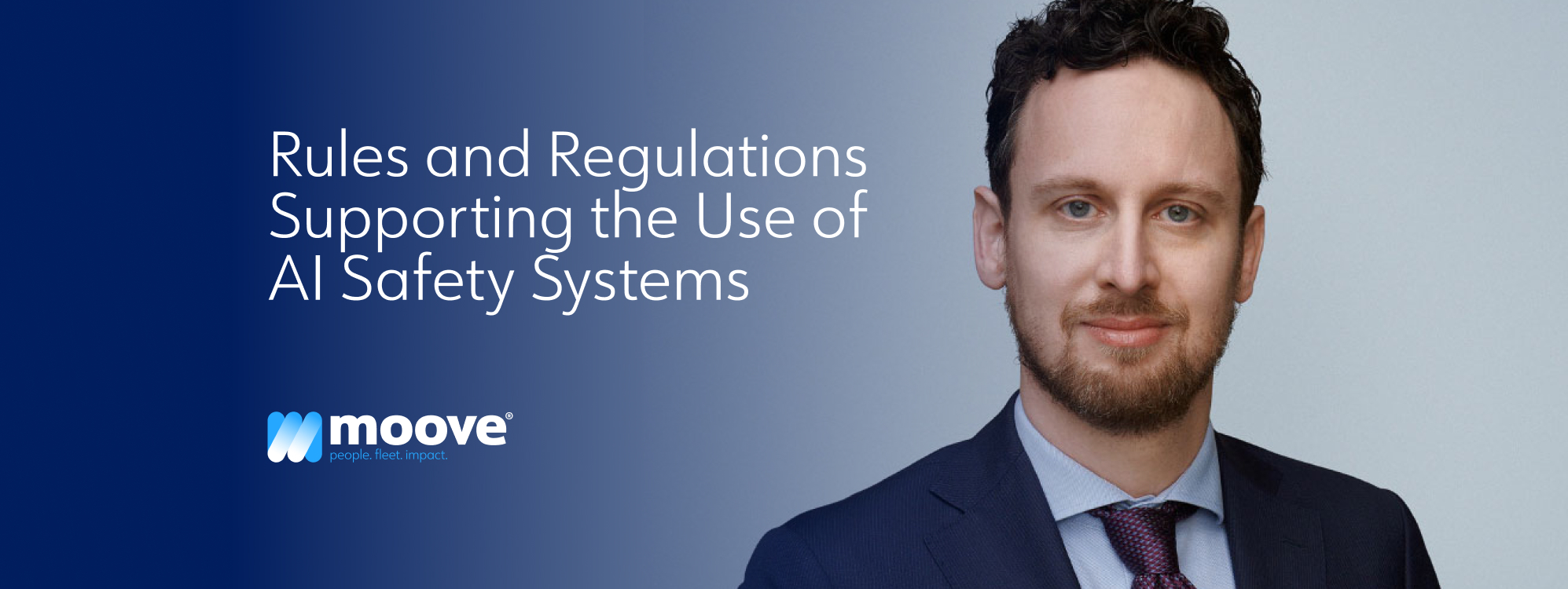
Are you ready for the next step in driver safety?
Fleet management is increasingly focused on improving driver safety. For businesses that are working with improving driver behaviour on the road, AI safety systems are the next step towards achieving that goal more effectively. The first pilot projects for testing this system with customers are underway. In this blog, we’ll explain how data is collected using this advanced technology and the sustainable impact that AI safety systems have on your fleet performance.
The AI security system recognises high-risk driving behaviour
Distractions while driving are the single largest cause of traffic accidents. AI safety systems are fully focused on ensuring the driver isn’t distracted while on the road. The system involves numerous cameras, including one aimed at the driver and another facing the front. As soon as the driver picks up the phone or glances at it, the system sends out an alert. The system can also detect when a driver seems tired or spends too much time looking out of the side window. With each kilometre driven, this auto-learning system will better recognise drivers’ undesirable behaviours.
The system can also capture images that can be sent to the fleet manager/supervisor in case of an accident. However, you can also agree to store the captured images locally. If there has been an accident, you can then choose to review the extracted footage and share the images as evidence.
Sustainable impact on your fleet and driver performance
The United States has more experience with AI safety systems than Europe. The data collected shows that the effects are instantly measurable and significantly impact driver behaviour. These safety systems have an immense impact in improving driver safety as well as decreasing damage and personnel turnover. This is also perfectly in line with the mission of companies wishing to improve their sustainability goals. If you incur less damage, you will have fewer vehicle breakdowns, lower repair costs, and, most importantly, less absenteeism. Because the monitoring process is constant, either through speech or alerts, you see that it has an instant effect. This is why Moove will focus squarely on implementing this technology in the coming years, because driver safety is high on the agenda for many of our customers.
Combining AI and privacy for optimal driving behaviour
With images being captured on camera, AI safety systems take ‘normal’telematics technology that extracts vehicle data one step further where privacy is concerned. Drivers’ faces could be blurred out in the images, allowing them to be displayed without revealing details about the people and surroundings outside the vehicle. You also have different data processing privacy options. Data can be displayed on a dashboard, where you can indicate whether to include all images. That allows you to review footage based on the alerts the driver has received. You can also set certain thresholds: for example, issuing three warnings in the vehicle for inappropriate driving behaviour and then sending an alert to the fleet manager if it happens a fourth time.
‘Openness and transparency are essential to getting the most out of the AI safety system.’
To safeguard drivers’ privacy, it is vital that you have systems that can work fully offline. However, this creates a dilemma because you need the images to recognise inappropriate driving behaviour and optimise the system’s learning capabilities. It’s in everyone’s interest to ensure a certain level of openness and transparency to get the most out of the AI system. That allows the safety system to better understand and detect human behaviour and the resulting risk of damage or an accident. As a business, you’ll need to strike a balance between optimising your drivers’ safety and respecting their privacy.
Would you like to learn more about AI safety systems and how you can use this advanced technology to improve your drivers’ safety? Let us know, and we’ll be happy to tell you more about it!


